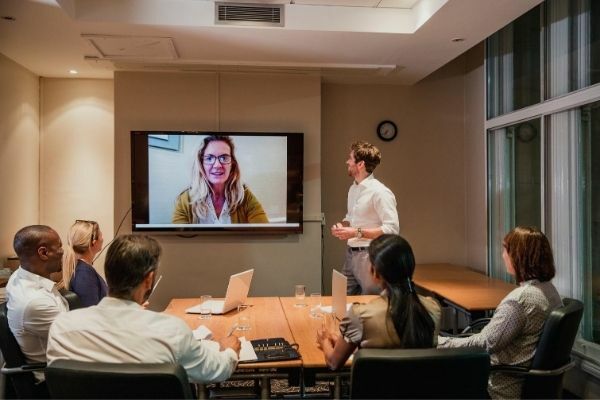Insights
INSIGHTS
All Topics
A Charity Guide to Planning 2021 Fundraising Events
23 Oct 2020by Aidan Paterson
With so much uncertainty, planning for the 2021 fundraising landscape might seem impossible right now. But the rise of digital fundraising events provides charities with a way forward
This article is sponsored by Enthuse, the fundraising, donations and events registration platform.
The charity sector has faced a myriad of problems in the last seven months. COVID-19 has posed an existential threat to the sector, disrupting everything from service delivery to day to day operations and fundraising. The wide and timely adoption of digital has provided a lifeline to charities, with organisations moving vital activities into the digital realm, many of them for the first time.
As events unfold, the primary challenge facing charities continues to evolve. We are now at a point where most charities have had their new digital systems and procedures in place for some time. This is an opportunity to evaluate: to assess what is working well and what could be done better.
But this poses its own difficulties. The time has come for charities to adopt a more planned and strategic approach to their fundraising campaigns. Yet the future is as uncertain as ever. How can you plan for the future when even the circumstances of the present are still very much up in the air?
The answer may lie in adopting a more flexible approach to planning. The only way to plan in an uncertain climate is to account for that uncertainty. To plan around it. There is a way to make this uncertainty a central component of your 2021 event planning.
Charity event planning faces unique challenges
This is more difficult in fundraising events than in any other area of charity operations. These events are the lifeblood of most charities. They provide vital resources that allow organisations to deliver their much-needed services. They also allow charities to engage with their supporters - to connect with the people who believe in their work and spread their message.
The pandemic has created a cruel dichotomy. On one hand, charity services were more in demand than ever. On the other, the events that traditionally funded these services were unable to take place.
Economic forecasts have been grim. There’s no doubt that we’re entering a global recession, with recent estimates from the OECD saying that Britain’s GDP will shrink by over 10% this year – the deepest recession since records began.
The initial prognosis for the sector was dire. But the reality has been a mix of ups and downs. A study from charity fundraising specialists Enthuse indicated that levels of giving actually increased during the first UK lockdown. This was due to people saving income from spending on other activities and travel, as well as enthusiasm for involvement in community-focused causes.
Research from Enthuse’s quarterly Donor Pulse report into donor behaviour also finds a strong inclination for future giving - especially among young people, because of a perceived lack of support for charities from the government.
Adapting to a new normal
Over the past few months, we have seen the widespread adoption of digital events. These events came with a number of benefits, some of which were unexpected. Barriers to participation were removed, and charities were able to expand and grow their supporter base beyond their immediate geographic region, or usual participant demographics.
Moreover, these events were more in line with evolving public sensibilities - with a reduced environmental impact and greater accessibility when compared with traditional event formats. As people become more concerned about their carbon footprint, as well as greater equality in access to opportunities, virtual events provide a way for charities to demonstrate that they share these values.
Yet there remains a clamour within the sector for the return of physical events. Charities planning physical events in 2021 will be looking to capitalise on the enthusiasm of a return to normality, and the sense of celebration that comes with it.
But is banking on this return to the status quo, and the ability to host physical events again, too high of a risk? If events are unable to go ahead, will organisers be left out of pocket?
There is a way to have the best of both worlds. By building safeguards into your planning; by hoping for the best and expecting the worst, you can create a fundraising event calendar that will allow you to capitalise on IRL participation wherever possible, whilst being able to run completely virtually if necessary.
A virtual event has the lowest risk of cancellation. In this guide, we show you how to start your planning there and scale up to a hybrid or physical format as restrictions begin to ease. This will allow you as much flexibility as possible, whilst building contingencies to avoid your carefully-planned event falling through.
Start by planning for virtual events
While the world awaits a viable vaccine, a full-scale return to physical events in the early part of next year is unlikely.
But even after social distancing restrictions are eased or lifted, virtual fundraising events are likely to remain popular. Positive experiences with the format, as well as an increase in more general digital behaviour, have increased demand. The newly digital-minded public are recognising that digital events can be fun, convenient and accessible.
A new eBook from Enthuse explains that:
"While there is no doubt that physical events will make their return in the months to follow, virtual events are here to stay too, and will become an increasingly important part of fundraising activities. They can be huge fundraisers in their own right, as well as key elements of a calendar of wide-ranging activities."
Virtual events should form the basis of your 2021 planning. Think of these events as the foundations of your calendar. The hybrid and physical events built on the higher levels of your planning may move or shift. If these virtual events are properly planned, you will be able to transition them into physical events should the opportunity present itself. But these foundations will remain fixed, allowing you to roll out your calendar with peace of mind - no matter what the future holds.
With virtual events, there are fewer factors to consider and therefore greater scope for flexibility in planning. For example, you won’t need to worry about the venue cancelling, or being shut down, or attendees having to isolate or quarantine en masse. Even in the event of another nationwide lockdown, well-planned virtual events should be able to progress as planned.
Making the switch to virtual fundraising events in 2021 can give charities the confidence to go ahead with their efforts and build up momentum over the coming months, as well as giving supporters something positive to look forward to.
The key is driving participation via web-based marketing activity, and considering how to successfully translate a physical event into a virtual one without losing the things that make an authentic experience.
Get to know the hybrid event format
If an entire calendar of virtual events seems like planning for a worst-case scenario, then you can build hybrid events into your schedule. This emerging event format allows organisers to benefit from the best aspects of both virtual and physical events.
Hybrid events take place in a physical venue, while also being attended by a live audience online. But unlike simply live streaming an event, the key to crossing the physical-virtual divide is participation – supporters are brought into an event experience together with physical participants, and they get to interact, ask questions and engage with fellow attendees.
As we face the unknown, virtual and physical-virtual hybrid event formats give charities the flexibility to plan imaginative, fun and novel experiences for their supporters that can be adapted to whatever restrictions might be in place.
It is this flexibility that makes the hybrid format so appealing from a planning perspective. A hybrid event allows organisers to capitalise on the excitement factor and participation of a physical event, whilst also building in contingencies.
If increased lockdown measures take effect close to the time of your event, you will already have a platform in place to allow you to deliver the event virtually. And if measures have eased by that point, you will be able to offer physical participation, whilst allowing participation for those who either cannot attend or do not feel comfortable doing so.
They also allow organisers to build nationwide campaigns comprised of smaller communities. This has a number of benefits. In an era of localised lockdowns and different restrictions for different locales, hybrid events allow charity event planners to encourage participation in a safe way depending on the social distancing measures in force in your area.
It’s only fitting that as one of the key dates in the charity fundraising calendar, the London Marathon pioneered the hybrid event model this summer. The physical component of the event was restricted to a number of elite athletes, but runners raising vital funds for charities were still able to take part virtually.
A marathon is a great example of how a hybrid event works in practice. Some participants continue to run the race in a centralised location, whilst other attendees take part closer to home, tracking their participation through an event app. As we move forward, expect these kind of events to become more common.
Hybrid events are perhaps best situated to capture the zeitgeist. They allow for hyper-personalised experiences - one of the emerging trends in the events sector. The uptick in digital during the pandemic has created a new level of supporter expectation. The opportunity for personalisation afforded by the hybrid model allows charities to cater to individual participants in a meaningful way.
Save the date, location TBD: How charities can scale up virtual plans into physical events
Despite the benefits of virtual events, we recognise that there will always be an appetite for more traditional physical formats.
Whilst planning an in-person event for New Year’s Day 2021 might not be a very good idea, scheduling events for the summer months, or towards the end of 2021 is a different proposition.
In fact, there may be an incentive to having a physical event plan up your sleeve. Once it is safe to do so, there will certainly be an appetite for traditional event formats. Anything signalling a return to normal will be greeted with a warm welcome from many people. Charities throwing feel-good participation events may well stand to benefit from the celebratory atmosphere.
The most important thing is to remain flexible in your planning and to build as many contingencies as possible into your event. We would highly suggest that you incorporate a hybrid element into your plans. That way, if your event cannot take place due to increased social distancing measures you will not have to cancel the event outright.
For this reason, you should consider the purpose and format of any physical event. Events that would be able to take place in a virtual format will be a far lower risk than events tied to a single place and time.
This can be done very simply. Begin planning any physical events as virtual ones. Then introduce hybrid elements, and increase the level of physical components depending on the level of restrictions in your area in the lead-up to the event. That way, the foundations of your event will be in place regardless of the level of restrictions in place on the day of the event.
If you need to scale back physical participation to a hybrid or even virtual event format, you will be able to do so, whilst minimising any impact to participation.
Kickstart your 2021 planning with this free online resource
Whatever format your event takes, having a reliable virtual event platform in place will ensure that the risk of having to cancel the fundraiser is as low as possible.
Enthuse’s virtual event platform allowed JDRF to plan a successful calendar of 2020 events during a period of great uncertainty. You can learn more about their planning here.
For more tips and information on getting started with virtual and hybrid events, download Enthuse’s free eBook for charities.
Get the ebook here
Download the ebook to learn more
Aidan Paterson
More on this topic
Recommended Products
Featured Products
Our Events
Charity Digital Academy
Our courses aim, in just three hours, to enhance soft skills and hard skills, boost your knowledge of finance and artificial intelligence, and supercharge your digital capabilities. Check out some of the incredible options by clicking here.




















